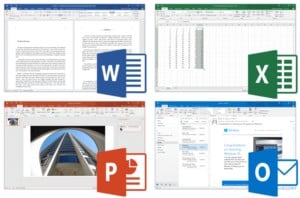With a muted fanfare, Microsoft has launched Office 2019.
The release of the latest version of Microsoft’s business applications suite was once a significant event, where Microsoft would lay out the latest features and updates. But this year, Microsoft has downplayed the release. Speaking in a recent interview, Microsoft’s corporate VP for Office and Windows, Jared Spataro, even went as far as to say: “Office 2019, all the features that we released in it, had previously been released in Office 365”.
So what’s going on with the latest Office release?
Perpetual licence vs subscription
For some time, Microsoft has been heavily promoting its cloud-based Office 365 solution as the way forward for businesses. In particular, it’s looking to promote its ProPlus iteration – a competitively priced, subscription-based solution. Office 365’s cloud subscription model holds a number of benefits for businesses, including spreading costs, use on the go, and access across multiple devices.
While this is great for organisations with more mobile workforces, others simply want a licensed copy of Office installed on their work PC. This is where Office 2019 comes in.
Office 2019 is supplied with a perpetual licence. This means that businesses only pay once to license the software to one particular PC or device. This approach may restrict cross-device usage but can hold benefits for small businesses or those looking to make capital expenditure benefits.

Core applications within Microsoft Office 2019
There’s a number of reasons why Microsoft is less keen on perpetual licensing. To start with, it represents a one-time rather than recurring revenue. Perpetual licensing also make Microsoft less ‘sticky’ to customers. Should Office 2019 become outdated, companies may consider alternative products. In contrast, Office 365 is constantly being updated, so the user doesn’t need to consider redundancy and is less likely to go out to market for a new solution.
Finally, perpetual-licensed products increase the chance of IT security risks. We’ve detailed before how Microsoft’s legacy, unsupported operating systems are now being targeted for weaknesses by malware creators. Viruses such as WannaCry have in the past forced Microsoft to develop patches to protect outdated operating systems for no additional cost benefit to the company. There is likely little desire to repeat this.
The future of Microsoft Office 2019
By downplaying the features of Office 2019, Microsoft seems to be clearly indicating the direction that it wants to take the Office suite. Even from launch, Office 2019 will lag behind Office 365, which has recently received an update.
Regardless, Office 2019 may still prove the right fit for some businesses. Microsoft Office has made leaps forward in recent years, so any company using old versions may benefit from an upgrade.
For more information on Microsoft Office solutions, please get in touch.




